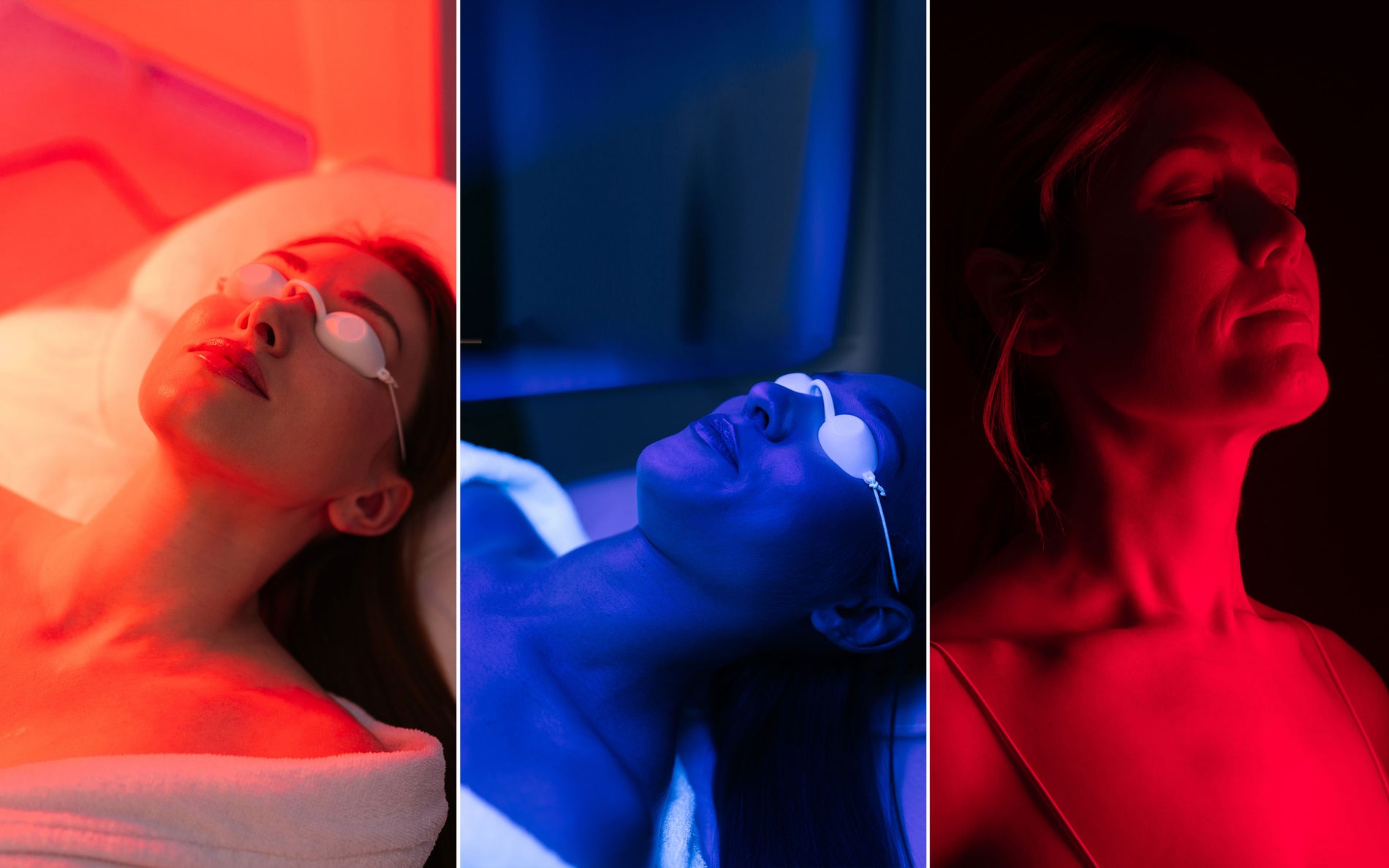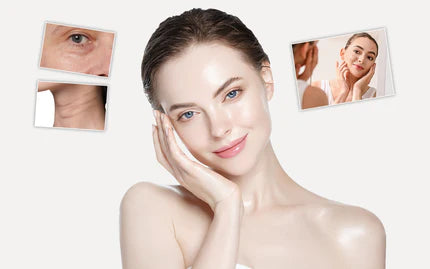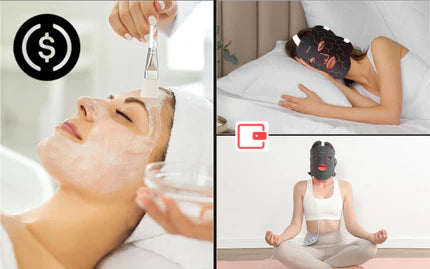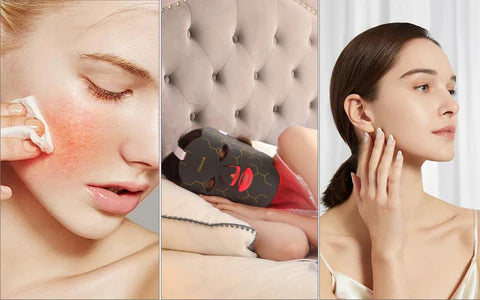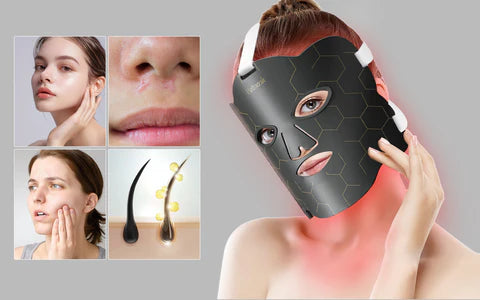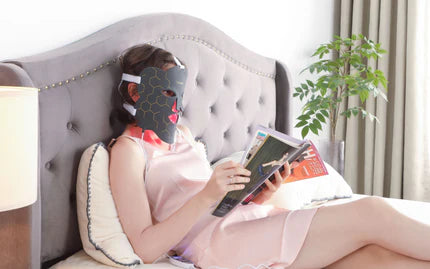Quick Answer
Yes, at-home LED light therapy is generally safe when used according to the manufacturer’s instructions. It’s a non-invasive treatment that can improve skin health, targeting issues like aging and acne. Make sure to choose an FDA-approved device from a trusted brand, use protective eyewear, and start with shorter sessions, gradually increasing as your skin adapts.

Introduction
LED light therapy has become a hot trend for taking care of your skin at home. It’s not just for doctor’s visits anymore—now, people everywhere are using this cool method to help their skin look better, fight signs of aging, and clear up acne. With all the buzz, you might be curious about trying it out yourself. Of course, with any new beauty trend, you want to make sure it’s safe and actually works. That’s what we’re here for! In this guide, we’ll walk you through everything about at-home LED light therapy, from what it can do for your skin to how to use it safely, so you can feel confident about giving it a go.
What Is LED Light Therapy and How Does It Work?
LED light therapy, short for Light Emitting Diode therapy, is a non-invasive skincare treatment that harnesses the power of specific wavelengths of light to trigger various biological responses in the skin. This innovative approach to skin health operates on the principle that different colors of light can penetrate the skin to varying depths, each offering unique benefits.
The most commonly used types of LED light in skincare are:
- Red Light: Known for its ability to stimulate collagen production and reduce inflammation, red light therapy is often used for anti-aging purposes and to promote overall skin health.
- Blue Light: Particularly effective against acne-causing bacteria, blue light therapy is a go-to treatment for those struggling with breakouts and oily skin.
- Near-Infrared Light: This invisible light penetrates deeper into the skin, potentially aiding in wound healing and reducing pain and inflammation.
- Traditionally, LED light therapy was only available through in-office treatments at dermatology clinics. However, the advent of portable, user-friendly devices has brought this technology into homes worldwide, making it more accessible than ever before.
Why Is At-Home LED Therapy Becoming So Popular?
The surge in popularity of at-home LED light therapy devices is nothing short of remarkable. According to recent market research, the global LED light therapy market was worth $1 billion in 2022 and it’s predicted to grow each year by 4.6% from 2023 to 2030. This explosive growth can be attributed to several factors:
- Convenience: The ability to perform treatments in the comfort of one’s home, without scheduling appointments, has broad appeal.
- Cost-effectiveness: While the initial investment in a device may be substantial, it often proves more economical than repeated in-office treatments over time.
- Pandemic-related shifts: The COVID-19 pandemic accelerated the adoption of at-home beauty treatments as people sought alternatives to in-person services.
- Technological advancements: Improvements in LED technology have made home devices more powerful and effective, narrowing the gap between professional and consumer-grade equipment.
As more people embrace the concept of high-tech skincare at home, LED light therapy masks and handheld devices have become increasingly common fixtures in personal care routines.

What Are the Potential Benefits of LED Light Therapy for Your Skin?
The allure of LED light therapy lies in its wide array of reported benefits, which extend beyond mere cosmetic improvements. Here’s a closer look at some of the potential advantages:
Red Light Therapy Benefits
- Stimulates collagen production, potentially reducing fine lines and wrinkles
- Improves skin tone and texture
- Reduces inflammation, beneficial for conditions like rosacea
- May accelerate wound healing
Blue Light Therapy Benefits
- Kills acne-causing bacteria on the skin’s surface
- Regulates oil production in sebaceous glands
- Can improve mild to moderate acne without harsh chemicals
Near-Infrared Light Benefits
- Penetrates deeper into tissues, potentially aiding in muscle recovery
- May reduce joint pain and inflammation
- Could improve skin healing after procedures or injuries
How Safe Is LED Light Therapy for Regular Use?
LED light therapy is widely regarded as a safe treatment, especially when compared with invasive procedures or treatments that involve harsh chemicals. It’s a non-invasive method that uses light-emitting diodes (LEDs) to deliver specific wavelengths of light to the skin for various therapeutic benefits.
The FDA has indeed approved several LED devices for treating conditions like acne and signs of aging. Such approvals are granted after a careful review of clinical data confirming that these devices are safe and effective for use according to their directions.
However, safety also depends on proper usage. It’s important to follow the specific instructions provided by the manufacturer about how often and for how long to use the device. This includes guidelines on the distance the device should be from your skin and whether protective eyewear is needed. Following these recommendations helps ensure you’re using the device safely and getting the most benefit from your LED therapy sessions.
What Should You Be Cautious Of When Using LED Light Therapy at Home?
To ensure you get the benefits of LED light therapy without unnecessary risks, being well-informed and cautious is key. Here’s a detailed rundown of what to watch out for:
- Adhere to Usage Guidelines: Stick to the advised schedule for treatment. Overdoing it can lead to skin discomfort or increased sensitivity. The device’s instructions will provide a recommended duration and frequency—these are based on clinical evidence to maximize efficacy while minimizing risk.
- Correct Operation: Use the device as intended. This means positioning it at the appropriate distance from your skin as per the manufacturer’s guidelines. Using the device for longer than suggested can increase the likelihood of side effects.
- Medication Interaction: Certain medications, particularly those that cause photosensitivity, can react negatively with LED light exposure. Always check with a healthcare provider regarding your current medications before starting LED light therapy sessions.
- Choose Certified Devices: Opt for devices that have been cleared or approved by the FDA. These have undergone scrutiny for safety standards. Using unregulated devices can be risky since they may not have been through proper safety assessments.
- Monitor Skin Response: Keep an eye on how your skin reacts after each session. Any signs of redness, rash, or other irritation should be taken seriously. If such symptoms occur, stop using the device and seek advice from a dermatologist.
- Professional Consultation: For those with pre-existing skin conditions, or if you’re unsure about starting LED light therapy, consulting with a dermatologist can provide personalized guidance and reassurance.
- Emergency Protocol: In the rare event of severe skin reactions or discomfort, discontinue use immediately and reach out to a medical professional for assistance.
It’s worth noting that serious side effects from LED light therapy are rare when devices are used correctly. However, if you experience any unusual reactions, discontinue use and consult a dermatologist.
Try LED Light Therapy at Home for a Brighter Skincare Routine
LED light therapy is an innovative and effective treatment for your skin, now conveniently available for at-home use. It offers a semblance of sophisticated dermatological services right in the comfort of your bathroom. While it’s generally safe, it’s smart to be careful and know what you’re doing. Get to know how it works, pick a good device, and follow the instructions. Remember, your skin is unique, so what works for your bestie might not work for you. If you’re not sure, chat with a skin doctor before jumping in, especially if you’ve got sensitive skin. As we learn more about LED therapy, stay in the loop with the latest info. Who knows? This might be the glow-up your skin’s been waiting for. So why not give it a shot and see if it lights up your skincare game?
